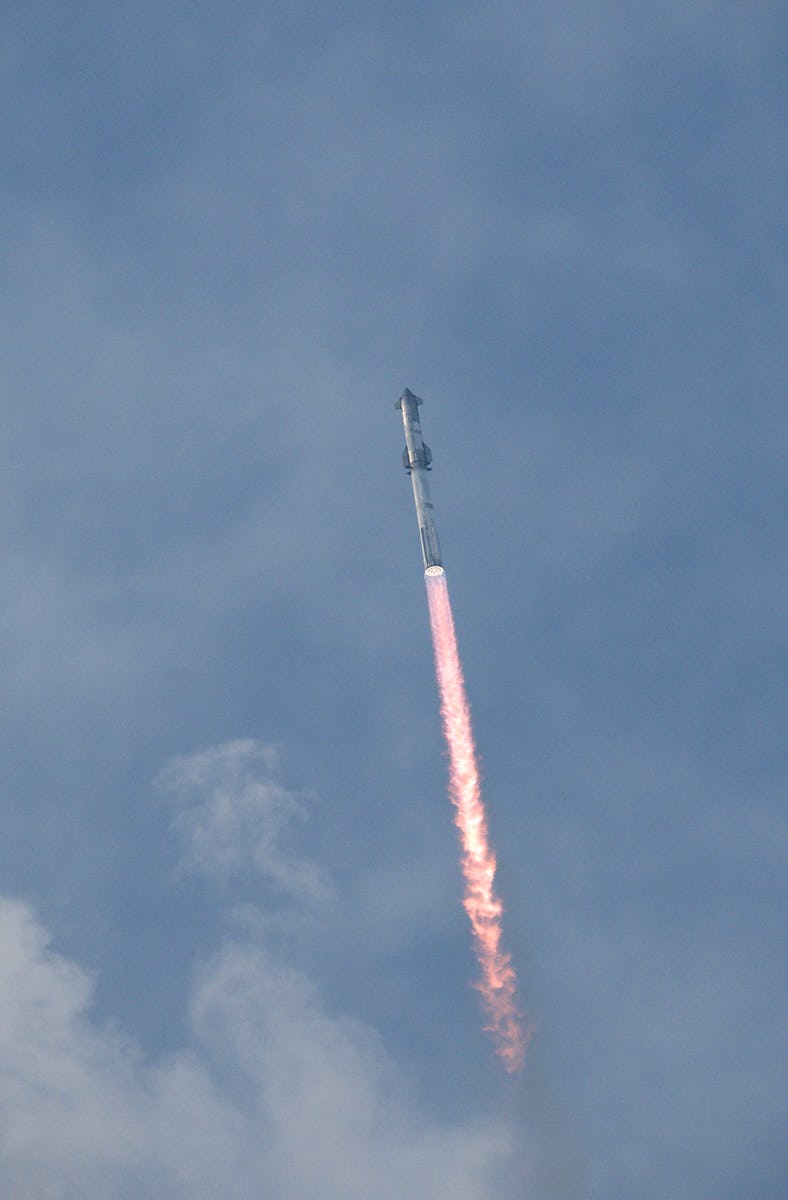Look! SpaceX’s Epic Starship Orbit In Photos
A picture is worth a thousand words, especially when the picture includes giant rockets.

SpaceX launched the world’s most powerful rocket — and the largest flying object humans have ever built — on Thursday morning.
The launch was the third flight test, and the first successful orbital flight, for Starship and its monstrous Super Heavy rocket booster.
Starship and its Falcon Heavy booster blast off into the Texas sky.
Starship suffered “rapid unscheduled disassembly,” which is the polite way to say it exploded, on its first two flights. No pressure for this one.
Starship waits on the launch pad just before its third integrated flight test with Super Heavy on March 14.
Both Starship and the Super Heavy booster run on liquid oxygen and methane propellant, and it takes about 10 million pounds of propellant just to get Starship into space.
Wait for it...
Super Heavy packs 33 Raptor engines, while Starship has just 6: half for flying in the atmosphere and half to provide thrust in space.
Smoke billows around the launchpad as dozens of Raptor engines ignite.
Starship blasted off at about 9:25 ET. The goals for this first test flight were to reach orbit, complete a 90-minute lap around Earth, test the payload door and an onboard fueling technique, and then return to Earth in one piece.
Please don’t explode; please don’t explode; please don’t explode.
Super Heavy shoves itself away from the ground with about 16.7 million pounds of thrust, almost twice as much as NASA’s Space Launch System (which blasted off with so much force that it damaged its launch pad in 2023).
The incredibly photogenic Raptor engines firing at full power.
Once they’re in space, Starship and Super Heavy have to part ways. This “hot staging” separation process, named because three of Super Heavy’s engines keep firing during separation, went wrong and destroyed both the booster and the spacecraft back in November 2023. Thursday’s hot staging went off without a hitch.
From a camera aboard Starship, the Super Heavy booster falls toward Earth in the background.
Starship successfully fired its thrusters to nudge itself into orbit and performed both scheduled tests.
Starship successfully reached orbit for the first time on March 14.
The black thermal tiles along the underside of Starship are designed to protect the spacecraft from the heat of re-entry into the atmosphere. They can dissipate heat up to about 2600 degrees Fahrenheit, assuming they’re all intact.
Starship begins its fiery plunge through Earth’s atmosphere, aiming for a water landing in the Indian Ocean.
The friction of a spacecraft passing through the atmosphere generates a tremendous amount of heat. It’s important to keep the spacecraft — and eventually, the crew and payload that will be inside — insulated from that heat.
Everything seems fine in this photo, but shortly afterward, SpaceX lost contact with Starship. Most likely, it broke apart during re-entry.
Starship didn’t survive its return to Earth, but SpaceX says its engineers gathered large amounts of data during re-entry, which will help them make improvements. SpaceX estimates that Starship needs about 100 more test flights before it’s ready to carry humans.